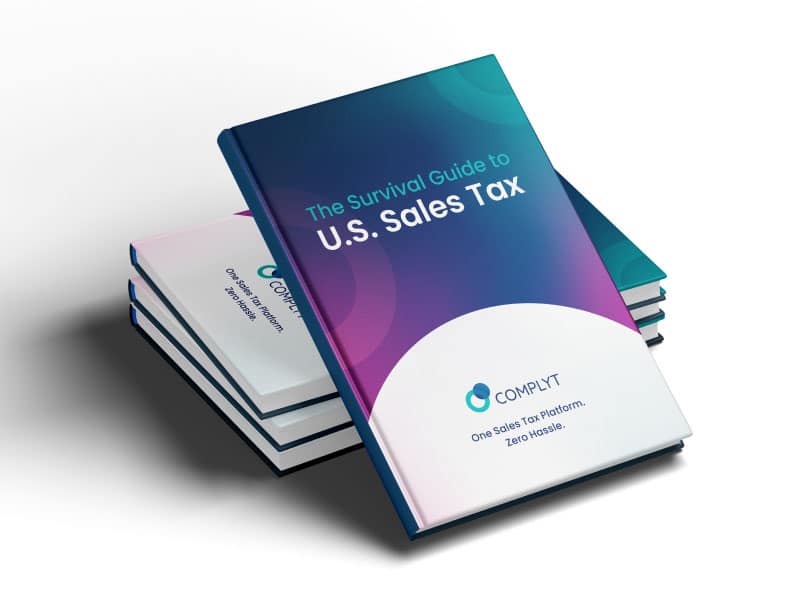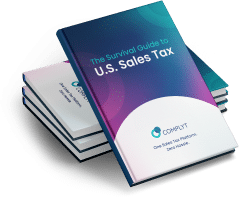What is the sales tax rate in Vermont?
Vermont imposes a state-wide sales tax of 6%, with an optional local tax of 1% that can be levied by municipalities. These local taxes are collected on behalf of the municipalities by the state. The combined sales tax rate in areas with local taxes is therefore 7%.
The sales tax in Vermont applies to the sale of tangible personal property, amusement charges, fabrication charges, some public utility charges and some services.
It is important to note that the sales tax rate in Vermont may vary depending on the location of your business or the delivery location for your online sales, due to the additional 1% local tax. This is something that businesses need to take into consideration when calculating the correct sales tax amount.
When should your business collect Sales Tax in Vermont?
Businesses are required to collect sales tax in Vermont if they have a nexus in the state. Nexus can be established by having a physical presence, economic presence, or by meeting the state’s threshold for total sales or number of transactions. If your business has nexus in Vermont, it must collect sales tax on all taxable transactions.
Vermont Physical Sales Tax Nexus
Having a physical presence in Vermont creates a sales tax nexus. This means that your business is obligated to collect sales tax in Vermont.
Sales Tax Physical Nexus checklist for Vermont
A physical nexus in Vermont can be established by:
- Having an office, warehouse, or other place of business in the state.
- Employing staff in Vermont.
- Owning property or inventory in the state.
- Having representatives, agents, or affiliates operating in Vermont on behalf of your business.
The parameters of a physical nexus may not be as cryptic as signs of the Lake Champlain Monster, but thanks to the digital business landscape, it comes pretty close.
Vermont Economic Nexus Threshold: Revenue, Thresholds and Transactions
Vermont has adopted an economic nexus law, which requires out-of-state sellers to collect and remit sales tax if they exceed a certain threshold of sales or transactions in the state. This law applies to businesses that do not have a physical presence in Vermont.
The economic nexus threshold in Vermont is $100,000 in sales, or 200 separate transactions. Simple enough. But a nightmare to monitor when you get caught in the day-to-day motion of operations.
Which services are taxable in Vermont?
In Vermont, sales tax is primarily applied to tangible personal property. However, some services are also subject to sales tax, particularly if they involve the creation or modification of tangible personal property.
Taxable services in Vermont include:
Fabrication services: When a business modifies tangible personal property owned by a customer, the service is subject to sales tax. Examples include printing services, embroidery services, and custom furniture manufacturing.
Amusement charges: Admission fees, membership fees, and other charges for access to places of amusement, entertainment, or recreation are subject to sales tax.
Telecommunications services: Vermont applies sales tax to certain telecommunication services, including local private line services and mobile telecommunications services.
Certain utilities: Sales tax is applied to retail sales of electricity, gas, and heating fuel.
It’s important for businesses to understand that not all services are taxable. If you’re unsure whether a specific service is subject to sales tax, it’s a good idea to consult with a tax professional or contact the Vermont Department of Taxes.
Vermont Sales Tax on Products: How to Calculate What Your Business Should be Charging
Calculating sales tax in Vermont involves applying the state and local tax rates to the sales price of taxable items. Here’s how to calculate the sales tax your business should charge:
Determine the location of the sale: Identify where the transaction occurs or where the product is delivered to apply the correct local tax rate.
Identify the sales price: This includes the cost of the item, any fabrication or service charges, and any shipping or handling fees.
Apply the tax rate: Multiply the sales price by the state tax rate of 6% and add any applicable local tax of 1%.
Round to the nearest cent: Round the calculated tax amount to the nearest cent to get the final tax amount to charge.
Example:
If you sell a $100 item in a municipality with a local tax, the total sales tax would be:
($100 * 0.07) = $7.00
How much is the Vermont clothing tax?
Vermont does not impose sales tax on most clothing items. However, certain types of clothing and accessories are subject to the 6% state sales tax and any applicable local tax. These taxable items include:
- Clothing and accessories specifically designed for athletic or protective use (e.g., ski boots, football pads)
- Fur clothing
- Clothing accessories or equipment (e.g., handbags, jewelry)
It’s essential for retailers to correctly identify taxable and non-taxable clothing items to charge the correct sales tax.
Vermont Online Sales Tax: Are SaaS and Digital Services Taxable?
In Vermont, the sales tax laws have evolved to include certain digital services. These services are subject to the standard sales tax rate of 6%, and a local option tax of 1% if applicable.
SaaS Sales Tax Vermont: How is SaaS taxed in Vermont?
In Vermont, digital services are now subject to a 6% state sales tax and a 1% local option tax. Prewritten software, including SaaS, is taxable regardless of delivery method, while custom software remains exempt.
Effective July 1, 2024: The exemption for remotely accessed prewritten software (cloud software) is repealed, making it subject to the 6% state sales tax. Additionally, a 3% surcharge on short-term rentals starts on August 1, 2024.
Is SaaS Taxable in Vermont?
Yes, as of July 1, 2024, SaaS is taxed similarly to on-premises software.
Understanding sales tax nexus laws is critical. Physical nexus is established by a physical presence, while economic nexus is based on $100,000 in sales or 200 transactions annually.
How can a business get a sales tax permit in Vermont?
Businesses operating in Vermont that make taxable sales or provide taxable services need a sales tax permit, also known as a business tax account. Here’s a step-by-step guide to obtaining a sales tax permit in Vermont:
Determine if you need a permit: If you have a physical or economic presence in Vermont and make taxable sales or provide taxable services, you need a permit.
Register online: Visit the Vermont Department of Taxes’ online portal, myVTax, and complete the online registration process. You will need your business details, including the EIN or SSN, business structure, and estimated sales tax liability.
Wait for approval: After submitting your application, wait for the Department of Taxes to review it. You will receive your sales tax permit within a few business days once approved.
Display the permit: Print and display the permit at your business location or clearly display it in your T&Cs as an eCommerce seller.
Remember that having a sales tax permit is not a one-time process. You’ll need to renew it regularly and update your details if your business information changes.
Vermont Tax Return Due Dates Explained
In Vermont, sales tax returns are due on the 25th of the month following the end of the reporting period. However, if the due date falls on a weekend or holiday, the return is due on the next business day.
What is the required frequency for sales tax returns in Vermont?
The frequency for filing sales tax returns in Vermont depends on your business’s sales tax liability. If your tax liability is:
- Less than $500 per quarter: file annually
- $500 to $2,500 per quarter: file quarterly
- Over $2,500 per quarter: file monthly

